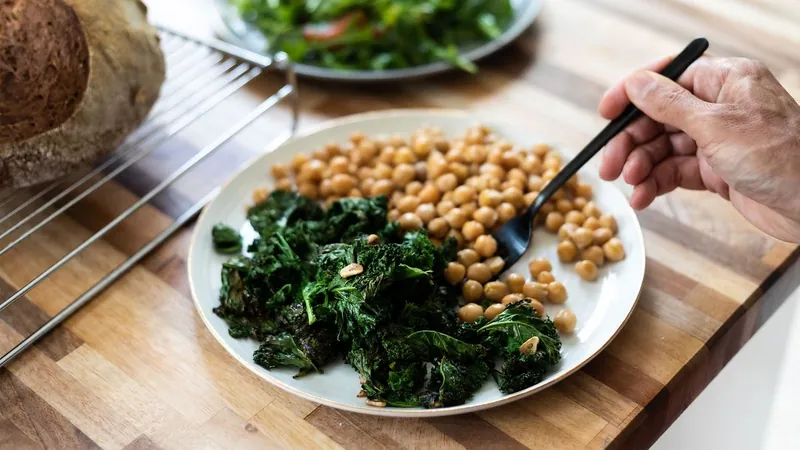
The Surprising Link Between Leafy Greens and Blood Thinners: What You Need to Know!
2024-09-29
Leafy Greens and Blood Thinners
Leafy green vegetables are often celebrated for their dense nutritional profile, offering fiber, vitamins, minerals, and antioxidants. However, these vibrant veggies can complicate the use of certain medications, particularly warfarin, a commonly prescribed blood thinner used to prevent harmful blood clots.
Why Do Leafy Greens Affect Medication?
The interaction primarily relates to the high levels of vitamin K found in leafy vegetables. Nutrition expert Joan Salge Blake from Boston University explains that some greens, including kale, spinach, collard greens, and Brussels sprouts, pack over 100 micrograms of vitamin K per serving. This vitamin is crucial because it assists the body in producing clotting factors, proteins that enable blood clot formation. Without adequate vitamin K, even minor injuries could result in excessive bleeding.
The Dangers of Blood Clots
On the flip side, blood clots can form even when there's no injury, especially in the arteries and veins. These clots risk blocking blood flow to essential organs like the heart and brain, leading to severe health crises such as heart attacks and strokes. This is why doctors prescribe anticoagulants such as warfarin, which inhibits an enzyme that activates vitamin K, thereby slowing down the clotting process.
The Balancing Act
Patients who increase their intake of vitamin K-rich leafy greens without warning may undermine the effectiveness of warfarin, making their blood too prone to clotting. Conversely, a sudden drop in vitamin K can lead to excessive bleeding, resulting from warfarin working too effectively. So, should those on blood thinners completely steer clear of leafy greens? Not necessarily.
The secret lies in consistency. Maintaining a stable intake of vitamin K is vital for managing the effects of warfarin effectively. According to Anastasiya Shor, a Touro College of Pharmacy expert, fluctuating between high and low vitamin K consumption makes it difficult to predict warfarin’s clotting effects.
Understanding Vitamin K Content in Greens
Not all leafy greens are created equal regarding vitamin K. For example, common greens like lettuce, asparagus, and okra contain much less vitamin K—between 30 to 75 micrograms—compared to spinach and kale, which can exceed 150 micrograms per serving. Therefore, individuals on blood thinners should consistently consume the same sources of vitamin K week after week to avoid complications.
Teamwork for Better Health
Collaboration is essential. Patients are encouraged to work closely with their healthcare providers and registered dietitian nutritionists in planning their diets. Ongoing communication about any dietary changes helps maintain stable warfarin effectiveness.
In a world where diet and medication often clash, staying informed is crucial. The newer generation of blood thinners and older ones like aspirin work through different mechanisms and do not interact with vitamin K, giving patients more flexibility.
Ultimately, while leafy greens offer significant health benefits, those taking blood thinners need to approach their diets mindfully to ensure the best possible health outcomes. Knowledge is power in maintaining a balanced lifestyle while managing medical needs!


 Brasil (PT)
Brasil (PT)
 Canada (EN)
Canada (EN)
 Chile (ES)
Chile (ES)
 España (ES)
España (ES)
 France (FR)
France (FR)
 Hong Kong (EN)
Hong Kong (EN)
 Italia (IT)
Italia (IT)
 日本 (JA)
日本 (JA)
 Magyarország (HU)
Magyarország (HU)
 Norge (NO)
Norge (NO)
 Polska (PL)
Polska (PL)
 Schweiz (DE)
Schweiz (DE)
 Singapore (EN)
Singapore (EN)
 Sverige (SV)
Sverige (SV)
 Suomi (FI)
Suomi (FI)
 Türkiye (TR)
Türkiye (TR)